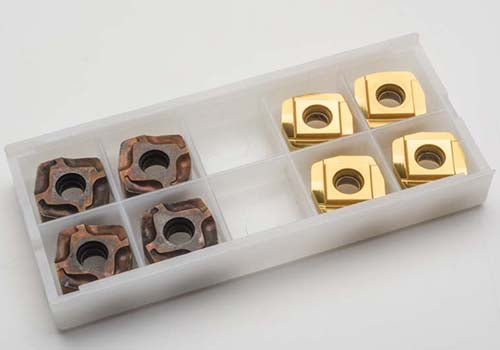
From Past to Present: A Look at CNC Inserts' Development
Share
Introduction
Computer Numerical Control (CNC) technology has been a game-changer in the manufacturing industry. It has brought significant improvements to the precision, speed, and accuracy of machining parts. However, CNC technology would be incomplete without its most important component, the insert used to cut the material. CNC inserts have seen significant development over the years, making them an essential part of the modern-day machining process. In this article, we will take a closer look at the evolution of CNC inserts from the early days to the present.
The Early Days of CNC Inserts
The first CNC inserts were made of high-speed steel (HSS), a material that was widely used in the manufacturing industry at the time. While HSS inserts were a significant improvement over the traditional cutting tools, they had several limitations. They wore out quickly, which meant that they needed to be replaced frequently. Additionally, they were not very efficient at cutting through harder materials like steel. Therefore, manufacturers needed a more robust and durable material to keep up with their increasing demands.
The Rise of Carbide Inserts
In the 1950s, carbide inserts were introduced to the market. These inserts were made of a combination of tungsten carbide and cobalt, which made them significantly stronger and more durable than HSS inserts. Carbide inserts could cut through harder materials more efficiently, and they lasted longer than HSS inserts. The development of carbide inserts revolutionized the CNC machining industry, and they are still the most commonly used insert today.
Recent Developments in CNC Inserts
While carbide inserts have been the standard for many years, there have been recent developments in the industry that may change that. One of the most promising new materials is polycrystalline diamond (PCD). PCD inserts are made of a diamond layer that is bonded to a carbide substrate. This material is incredibly hard and wear-resistant, which means that PCD inserts can last up to 100 times longer than carbide inserts. While PCD inserts are still relatively expensive, they are becoming more widely used in applications where high precision is required.
Another recent development in CNC inserts is the use of ceramic inserts. Ceramic inserts are becoming popular because they can withstand higher temperatures than carbide inserts. This makes them ideal for high-speed cutting applications. Ceramic inserts also have better wear resistance than carbide inserts, which means they last longer.
Conclusion
CNC inserts have come a long way since the early days of HSS inserts. The development of carbide inserts revolutionized the industry, and recent developments in materials like PCD and ceramic are promising. As technology continues to advance, it will be interesting to see what the future holds for CNC inserts. One thing is for sure; CNC technology will continue to evolve, and CNC inserts will play a crucial role in making it happen.




